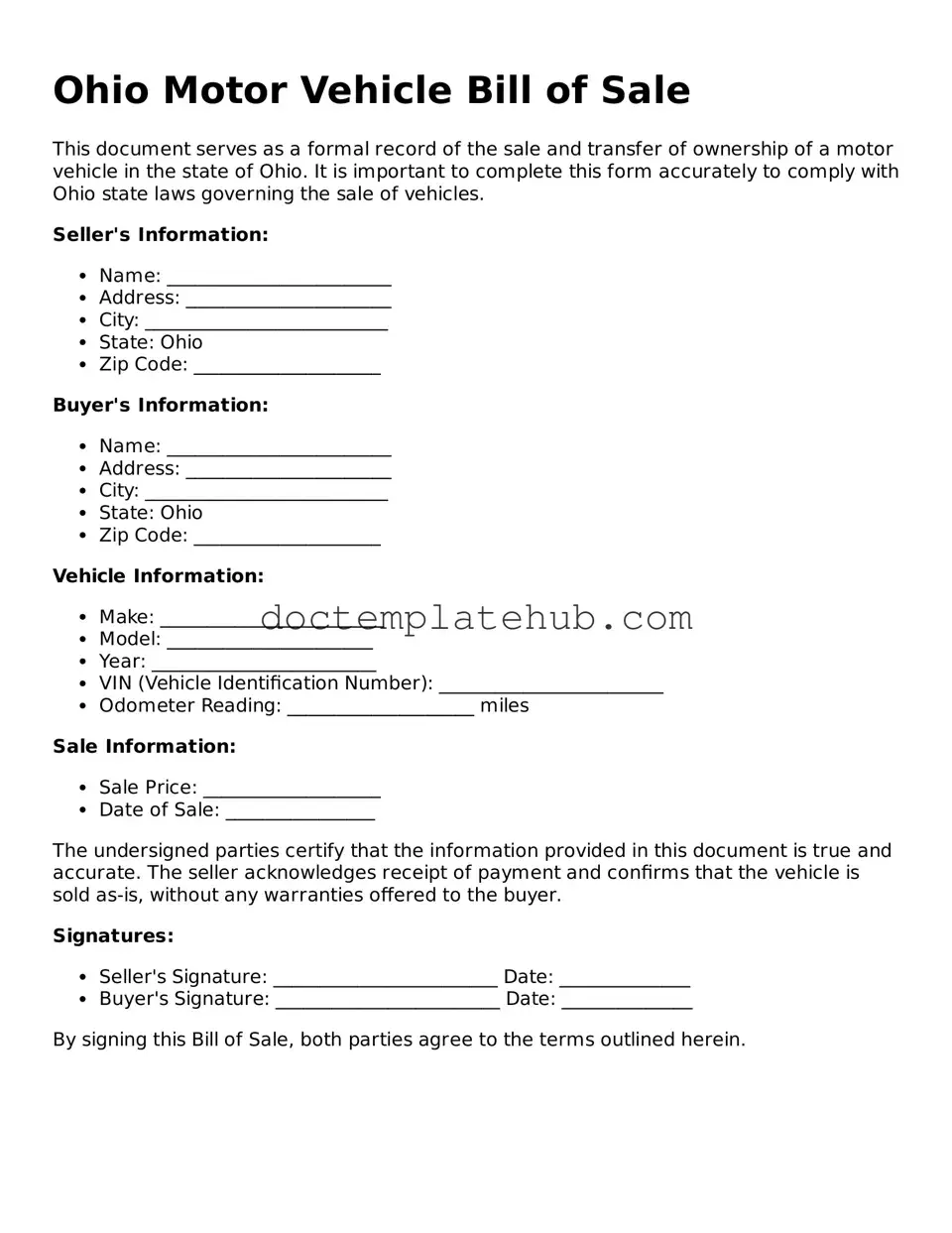What is the Ohio Motor Vehicle Bill of Sale?
The Ohio Motor Vehicle Bill of Sale is a legal document used to record the sale of a vehicle in the state of Ohio. This form provides essential information about the vehicle, the buyer, and the seller, ensuring that both parties have a clear record of the transaction.
Is the Bill of Sale required in Ohio?
While a Bill of Sale is not legally required to complete a vehicle sale in Ohio, it is highly recommended. This document serves as proof of the transaction and can help protect both the buyer and seller in case of disputes or issues that arise after the sale.
What information is needed to complete the Bill of Sale?
To complete the Ohio Motor Vehicle Bill of Sale, you will need the following information: the vehicle's make, model, year, Vehicle Identification Number (VIN), odometer reading at the time of sale, the names and addresses of both the buyer and seller, and the sale price. Additionally, both parties should sign and date the document.
Can I create my own Bill of Sale?
Yes, you can create your own Bill of Sale as long as it includes all the necessary information. However, using the official Ohio Motor Vehicle Bill of Sale form can simplify the process and ensure that you meet all state requirements.
Do I need to have the Bill of Sale notarized?
No, notarization is not required for the Ohio Motor Vehicle Bill of Sale. However, having the document notarized can add an extra layer of security and authenticity to the transaction.
What should I do with the Bill of Sale after the sale?
After the sale is complete, both the buyer and seller should keep a copy of the Bill of Sale for their records. The buyer will need this document to register the vehicle in their name, while the seller may need it for tax purposes or to prove the sale occurred.
How does the Bill of Sale affect vehicle registration?
The Bill of Sale serves as proof of ownership when the buyer registers the vehicle with the Ohio Bureau of Motor Vehicles (BMV). The buyer will need to present the Bill of Sale, along with other required documents, to complete the registration process.
What if there are errors on the Bill of Sale?
If there are errors on the Bill of Sale, it is important to correct them before finalizing the sale. Both parties should review the document carefully and make any necessary changes. If significant mistakes are found after the sale, a new Bill of Sale may need to be created to rectify the situation.
Can I use the Bill of Sale for a vehicle purchased from a dealership?
Typically, dealerships provide their own sales contracts or purchase agreements that serve a similar purpose as a Bill of Sale. However, if you prefer to use the Ohio Motor Vehicle Bill of Sale, you may do so, but it is usually not necessary when dealing with a dealership.
What happens if I lose the Bill of Sale?
If you lose the Bill of Sale, it may be challenging to prove the transaction took place. It is advisable to keep a secure copy of the document. If you cannot locate it, you may need to contact the seller to request a replacement or create a new Bill of Sale, documenting the transaction again.
